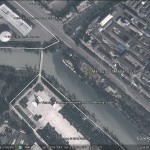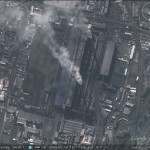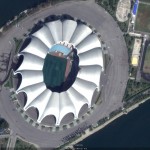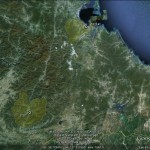
Pictured above (Google Earth): The location of the Mansugyo Meat and Fish Shop (a.k.a. “Hero Street Meat Shop”) in Pyongyang
Institute for Far Eastern Studies (IFES)
2012-5-2
Recently, new stores are opening in Pyongyang.
On April 26, Kim Jong Un, the first secretary of the Workers’ Party of Korea, congratulated the opening of a meat store in Mansugyo.
The Korean Central News Agency (KCNA) reported on April 26 that the “dear respected Kim Jong Un appeared at the shop to congratulate its opening,” and “looking round the interior of the shop, Kim Jong Un expressed great satisfaction with the soldier builders having built the shop to be loved by the people. He ardently said leader Kim Jong Il would have seen the shop with the highest service level.”
The three-story store covers over 5,000 square meters. The first floor has fresh and frozen fish; the second floor sells beef, pork, goose, turkey, quail and processed foods; and the third floor is equipped with a restaurant serving bulgogi or barbecued beef.
Kim Jong Un is reported to have visited the construction site for the store in January and March and provided guidance over the direction of the project.
On April 27, the KCNA reported that another store, the Mirae Shop for scientists and technicians, opened in Pyongyang. It eulogized Kim Jong Un for naming the shop and commended “his noble intention” for promoting the development of science and technology.
The shop is reported to have a variety of popular goods for sale, including daily necessities, electrical appliances and foodstuffs. In addition, it also boasted its convenient facilities for customers such as alteration and watch repair services as well as elevators and beverage vendors.
On the same day, the KCNA also reported on opening of two other establishments; modern soymilk powder production process of Pyongyang Children’s Foodstuffs Factory and a process for producing sanitary articles at the Pyongyang Cigarette Paper Factory.
The soymilk powder production factory was described as follows: “Employees of the factory, soldier-builders and researchers of Kim Chaek University of Technology manufactured dozens of equipment needed for automatic packing process and the process of carrying and melting sugar powder and installed latest equipment.”
The development of the sanitary products factory was celebrated as an achievement that will meet the needs of women’s daily necessities.




